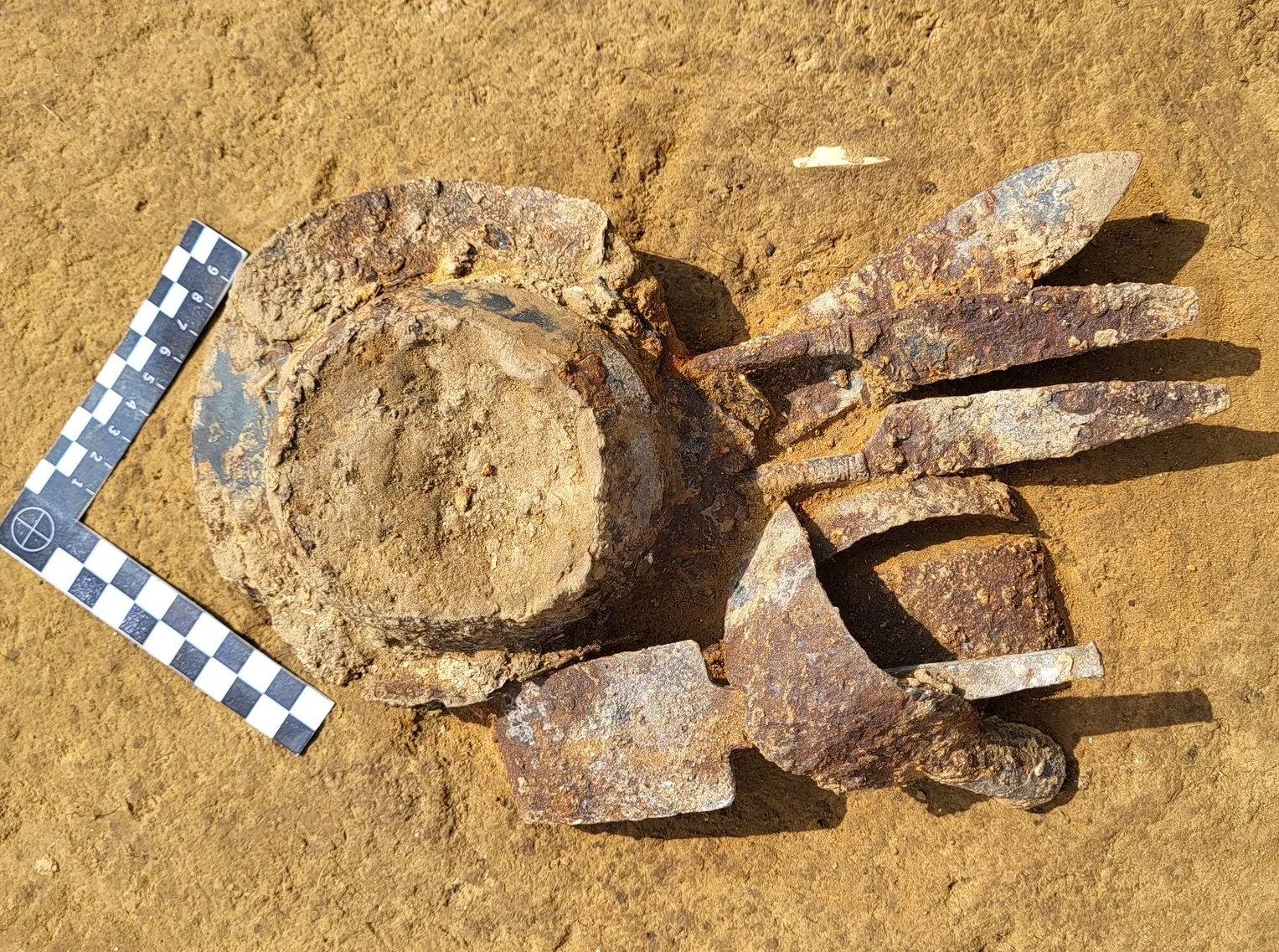Archaeologists have discovered two Vandal warrior graves during excavations of an ancient cemetery in Ostrowiec County, Poland.
The cemetery is located near the town of Glinka and dates from around the 3rd to 4th century AD.
Based on the material objects, the wider cemetery is associated with the Przeworsk culture, an Iron Age people that inhabited what is now central and southern Poland from the 3rd century BC to the 5th century AD.
Excavations also uncovered two pit graves cut into the cemetery strata, containing cremated human remains and traces of a funeral pyre. Archaeologists believe that these graves belong to warriors linked to the Vandals, a Germanic people who inhabited what is now southern Poland.

Following several conflicts with Rome, the Vandals established a kingdom which included the Roman province of Africa, as well as Sicily, Corsica, Sardinia, Malta and the Balearic Islands.
In AD 455, a Vandal force led by Gaiseric, King of the Vandals and Alans, sacked Rome for two weeks, causing widespread destruction to the city and the eventual collapse of the Roman Empire.
Archaeologists also found funerary objects linked to warriors of a high station. These include swords, shield elements, an umbo (shield boss), iron spearheads, and fragments of burnt clay vessels.

Dr. Marek Florek from the Office for the Protection of Monuments in Sandomierz, said: “Traces of scorching is visible on all the metal objects. This indicates that the bodies of the deceased, together with all the weapons, were burned on a pyre in a funerary ritual, before being placed in the pit graves.”
Both swords were found bent, a practice commonly associated with the Przeworsk culture and believed to ensure that the deceased could carry the weapon into the afterlife. However, the archaeologists also suggest that destroying the weapons could deter grave robbers by making them useless.
Header Image Credit : Voivodeship Office for the Protection of Monuments in Kielce
Sources : Science In Poland





